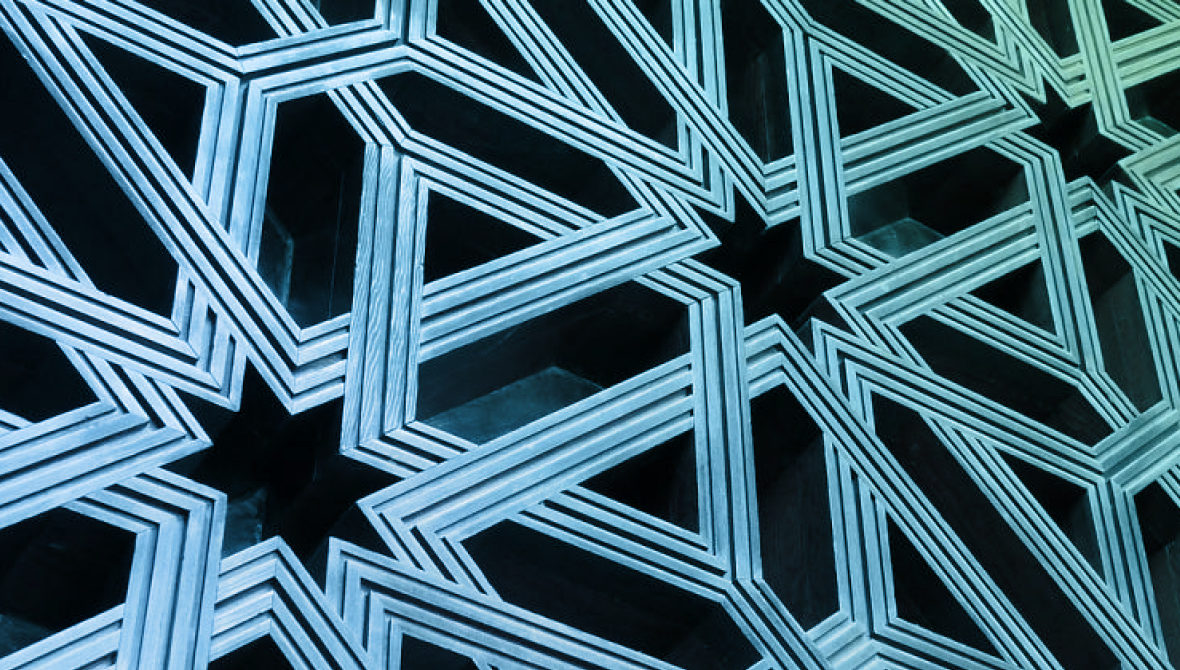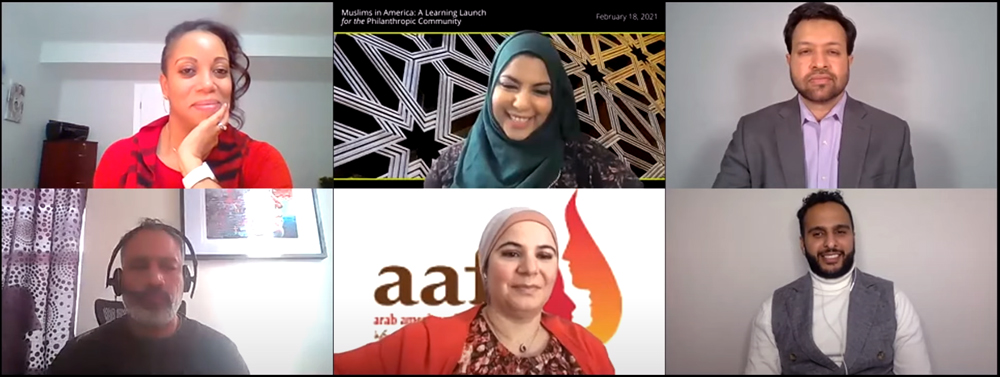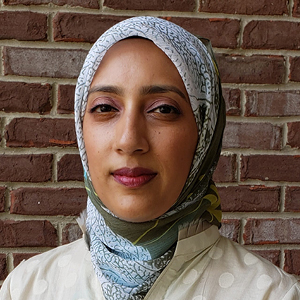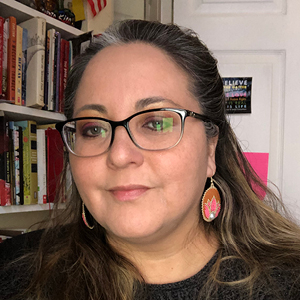Native and Muslim Americans: Two Marginalized Communities Find Similar Hurdles in Engaging Philanthropy


What does it mean to authentically know a community and invest in its progress and growth?
This is the question we ask ourselves as BIPOC (Black, Indigenous, People of Color) community leaders working to mobilize our communities and mainstream our issues.
In order for foundation leaders to become allies and demonstrate commitment to the communities they intend to support, they must understand the complicated histories, cultures, and self-determination of these vital communities… all of which take time.
“In order for foundation leaders to become allies and demonstrate commitment to the communities they intend to support, they must understand the complicated histories, cultures, and self-determination of these vital communities… all of which take time.”
What is common knowledge to marginalized communities needs to transfer as common knowledge to foundation leaders. In “Making the Invisible Visible; A Policy Blueprint from Urban Indian America,” the National Urban Indian Family Coalition (NUIFC) has gathered many data points that might surprise readers. For example:
At Muslims in America: A Year of Learning for the Philanthropic Community inaugural program, Outreach Coordinator Petra AlSoofy from the Institute for Social Policy and Understanding (ISPU) explained “The largest ethnic population of Muslims in the U.S. are African Americans (Younis, 2009).” Islam in America goes back 400+ years to the transatlantic slave trade where as many as 30% of all enslaved people brought to the U.S. from African countries were Muslim (Khan, 2019).

While one-third of Muslim households in America experience living in poverty (Chouhoud, 2019), Muslim communities are also incredibly generous. In a 2015 study of Muslims in Michigan, $117 million was donated to charity (Muslims for American Progress).
In both cases, the facts are obvious to the communities themselves; however, the minimal awareness from philanthropic leaders creates an ongoing challenge. Leaders of marginalized communities are tasked with the extra challenge of eradicating stereotypes about their people before mission-related conversations can even begin. The Chicago Native American community decided to change that.
The Chicago American Indian Community Collaborative (CAICC) comprises 16 community organizations with leadership focused on providing services and building capacity for long-term success. These leaders and organizations face various challenges in uplifting and empowering our youth, elders, and community members.
Over a year ago, CAICC worked with the Spencer Foundation and Field Foundation to sponsor a Day of Learning to expose the philanthropic community to the multiplicity of experiences and needs in our communities. The interactive day included learning about family stories from various community members with an interactive game and listening to various panel discussions from challenges faced in the community to how to support and collaborate on different projects. One of CAICC’s goals for the year was to host a donors’ forum and continue to engage with the philanthropic community. The Day of Learning has been instrumental in building ongoing relationships with various foundations.
The forum provided Native leaders with an opportunity to own narratives and push the envelope on what a successful funder-fundee relationship looks like. Foundations and community organization collaborations are based on open communication, learning about histories, and engaging in ongoing relationship building. The organizations have the knowledge, stories, and information on how to work within and support families, students, and community members. Providing the resources to do the work is what makes the funder-fundee relationship successful. Because of the relationships built, CAICC was able to secure over $200,000 to directly assist families across the 16 organizations with financial relief funds during the pandemic.
“The organizations have the knowledge, stories, and information on how to work within and support families, students, and community members. Providing the resources to do the work is what makes the funder-fundee relationship successful.
The CAICC and leaders from the Muslim community both share the same goals of bringing together leadership to highlight the resiliency and strengths of our communities. Both communities are composed of various organizations focused on cultural programming, youth development, wellness and health services, homeownership, leadership development, spiritual and religious services.
Through the Field Foundation, a mutual supporter of both communities, Muslim leaders were introduced to the Native Day of Learning. Following several conversations and analysis, Muslim leaders began realizing their collective power and also banding together. “There is a well-funded network that grooms Islamophobic attitudes, making it difficult to find sound information on Islam and Muslims” Dr. Shariq Siddiqi from the Muslim Philanthropy Initiative at Indiana University’s Lilly School of Philanthropy explained to this article’s authors. “We need an equally well-funded and well-organized effort to counter that narrative.”
Muslim leaders and allies have come together from across the country to plan a series of programs in 2021 entitled Muslims in America: A Year of Learning for the Philanthropic Community. In February, the virtual launch event brought together more than 300 people from the philanthropic community, Muslim leaders, and allies. Participants received a demographic overview of Muslims in America, had the opportunity to network with fellow participants on personal histories, and journey into virtual Muslim experiences led by cultural producers in film, comedy, music, art, and history.
A panel discussion on what successful engagement looks like revealed that there was a fear of being offensive that may prevent some from engaging meaningfully. Muslim panelists responded by expressing how they love answering questions and would prefer to be the source of inquiries that lead to better understanding. Furthermore, there was strong encouragement for philanthropic leaders to see Muslim-led institutions as valuable and supportable.
The launch was designed to create an understanding of who Muslims are today, the issues that drive them, and the challenges they face which require philanthropic investment for long-term impact. A recent report by The Bridgespan Group (2021) provides context to the under-investment in faith-inspired groups by nearly all major foundations (Queenan, et al). Among the six cities surveyed, the report found that faith-inspired organizations are trusted spaces that provide 40% of social safety net services. Conversely, the 15 largest private foundations grant only 12% of their safety net funding to faith-inspired organizations. The study finds that faith-inspired organizations have an intimate knowledge of their communities and should be considered innovative partners in meeting human needs.
“Muslim leaders and their allies have recognized the need for improving fact-based knowledge and removing the systemic barriers that historically prevent Muslim American nonprofit organizations from acquiring equitable opportunities to build relationships and receive funding and resources.”
Throughout the Year of Learning, Muslim leaders and their allies have recognized the need for improving fact-based knowledge and removing the systemic barriers that historically prevent Muslim American nonprofit organizations from acquiring equitable opportunities to build relationships and receive funding and resources.
Discussion between the authors found that there are commonalities in the experiences of their respective communities. What advice can leaders from these communities provide?
Through our work, we are learning that we have more to do to create a baseline understanding of Islam and Muslims among philanthropic leaders. Conveners of the Year of Learning seek to create awareness and an environment conducive to learning, engage in dialogue, and uncover opportunities to connect deeply.


Chouhoud, Y. (2019, November 26). The majority of Muslims believe poverty is the result of bad circumstances, not bad character. American Muslim Poll 2019 Secondary Analysis. Institute for Social Policy and Understanding. https://www.ispu.org/the-majority-of-muslims-believe-poverty-is-the-result-of-bad-circumstances-not-bad-character/
Institute for Social Policy and Understanding, Yaqeen Institute for Islamic Research. (n.d.) Engaging American Muslims: A briefing book for policymakers. https://www.ispu.org/briefing-book/
Institute for Social Policy and Understanding. (2018). American Muslim Poll 2018: Pride and prejudice [Graphic]. https://www.ispu.org/wp-content/uploads/2018/09/AMP-2018-Infographic_5.pdf?x46312
Khan, S. A. (2019, April 11). Muslims arrived in American 400 years ago as part of the slave trade and today are vastly diverse. The Conversation. https://theconversation.com/muslims-arrived-in-america-400-years-ago-as-part-of-the-slave-trade-and-today-are-vastly-diverse-113168
Mogahed, D., Chouhoud, Y., & Buageila. (2018). American Muslim poll 2018: Pride and prejudice. Institute for Social Policy and Understanding. Retrieved from https://www.ispu.org/american-muslim-poll-2018-full-report/
Muslims for American Progress. (2017). An impact report of Muslim contributions to Michigan. https://www.muslimsforamericanprogress.org/an-impact-report-of-muslim-contributions-to-michigan#philanthropy
Muslims in America: A Year of Learning. (2021). University of Illinois Chicago. https://yearoflearning.uic.edu
National Urban Indian Family Coalition. (2015, June). Making the invisible visible; a policy blueprint from urban Indian America. https://static1.squarespace.com/static/5b985402e17ba31b72a52f90/t/5baa51c0652deac39f3b7456/1537888709109/NUIFC_digital_Bookplain.pdf
Pew Research Center. (2017, July 26). Demographic portrait of Muslim Americans. https://www.pewforum.org/2017/07/26/demographic-portrait-of-muslim-americans/
Queenan, J. E., Grunert, P., & Murphy, D. (2021, January 28). Elevating the role of faith-inspired impact in the social sector. The Bridgespan Group. https://www.bridgespan.org/insights/library/philanthropy/role-of-faith-inspired-impact-in-the-social-sector
Scarborough, W., Kares, F. R., Arenas, I., & Lewis, A. E. (2019, June 7). Adversity and resiliency for Chicago’s first: The state of racial justice for American Indian Chicagoans. Institute for Research on Race and Public Policy, University of Illinois at Chicago. https://uofi.app.box.com/s/a6bmexkq3nad7h579in5v3wwrw3exlrg
U.S. Census. (2012, January). The American Indian and Alaska Native population: 2010. https://www.census.gov/prod/cen2010/briefs/c2010br-10.pdf
U.S. Census. (2019). American Community Survey demographic and housing estimates. 2019: ACS 1-year estimates data profiles. https://data.census.gov/cedsci/table?g=0100000US&tid=ACSDP1Y2019.DP05&hidePreview=true
Younis, M. (2009, March 2). Muslim Americans exemplify diversity, potential. Gallup. https://news.gallup.com/poll/116260/muslim-americans-exemplify-diversity-potential.aspx